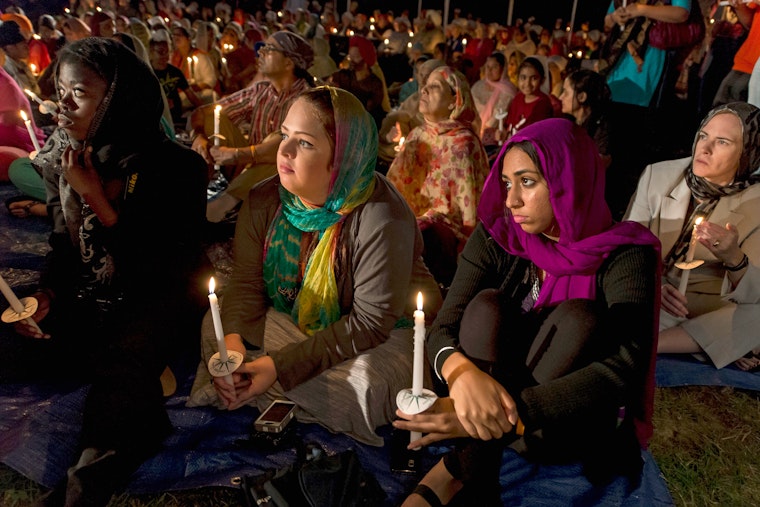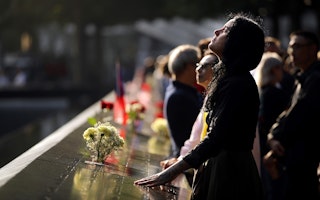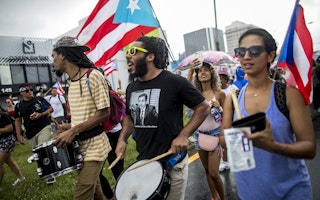Remembering the Terrorism at Oak Creek
By Amardeep Singh

Three years ago last week, six Sikhs were gunned down by a white supremacist while praying at their house of worship in Oak Creek, Wisconsin. Like Charleston, Oak Creek did not happen in a vacuum. Years of structural racism created the conditions that allowed these murders to happen. I learned these truths as I grieved with and advocated for family members who lost loved ones in Oak Creek.
It became clear to me that America’s core institutions prioritize protecting certain lives, sometimes at the cost of others. For example, the day after the Oak Creek murders both the Southern Poverty Law Center and Anti-Defamation League disclosed that they had substantial dossiers on the neo-Nazi perpetrator Wade Michael Page, who committed suicide following the shooting.
The federal government, however, seemed to know nothing about him. Why did nonprofit organizations know more about this extremist than the government?
Imagine if Wade Michael Page were Muslim, wore ISIS dress (instead of Nazi garb), and expressed on the internet a desire to commit extremist violence. Given that the federal government questions Muslims at U.S. borders without suspicion of wrongdoing and surveils Muslim institutions—with the goal of preventing even a hint of violence if Muslims are involved—you can be sure that the federal government would have known about Wade Michael Page. Officials would have taken every measure to stop him.
Despite assurances to the contrary, the allocation of law enforcement resources shows us that some lives simply matter more than others. Federal dollars earmarked to protect houses of worship do not go to vulnerable black churches, Sikh gurdwaras, or mosques. In fact, 90 percent of Department of Homeland Security (DHS) grants to protect nonprofit organizations go to Jewish organizations.
Jewish centers of worship and culture certainly need protection, but so do black churches, gurdwaras, and mosques. After the Oak Creek massacre, I heard Daryl Johnson, a former analyst at the Department of Homeland Security, testify [PDF] before Congress. He shared that under extreme pressure from conservative activists, DHS disbanded the unit he led that was charged with monitoring and tracking neo-Nazis, white supremacists, and similar violent extremists, and disavowed his report, Right-Wing Extremism.
This unbalanced federal focus and allocation of resources runs contrary to local law enforcement priorities when it comes to domestic terror threats. When you ask law enforcement about their greatest terror concerns, sovereign citizens and neo-Nazis top the list—not Al-Qaeda, and not ISIS. In other words, it’s the Wade Michael Pages of the world that worry local police the most when it comes to terror, not the Muslim communities the federal government surveils.
Like the government, the media’s institutional bias is clear. Consider how major media outlets characterize extremist violence. Dylan Roof, the white supremacist who shot up a historic black church in Charleston, sought to strike fear in the black community to further his desired change to the social and political order of the United States.
Yet the word “terrorism” was expressly absent from mainstream media characterizations of the shooting. The same was true of Wade Michael Page. The FBI reports that only six percent of domestic terrorists between 2008 and 2012 were Muslim; however, 81 percent of news reports on domestic terrorism discussed Muslim extremists.
The “T-word” is readily applied to brown people (who are “terrorists”) and black people (who are “thugs”), but rarely to whites exhibiting the same behavior.
There wasn’t a dry eye in the room when Harpreet Singh Saini, who lost his mother in the Oak Creek terror attack, described [PDF] how he and his brother ate the last roti that their mother had made for them before she was murdered. We often remember those who love us in these small and meaningful ways.
Perhaps the response after events like Oak Creek and Charleston should be honest conversations about institutional bias and how it affects people. To not examine our institutions, to cling to flawed polices and false narratives, creates the space for people to suffer and die because of their race, religion, and ethnicity—and provides cover for those who would do them harm.
We cannot stop every extremist violent attack from happening. What we can do is allocate resources fairly and equally to protect us all. Structural racism in America is real, and it costs lives.
I learned this in Oak Creek.
Until February 2021, Amardeep Singh was senior program officer for the National Security and Human Rights Campaign of Open Society-U.S..


